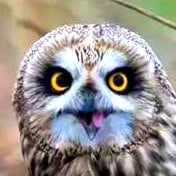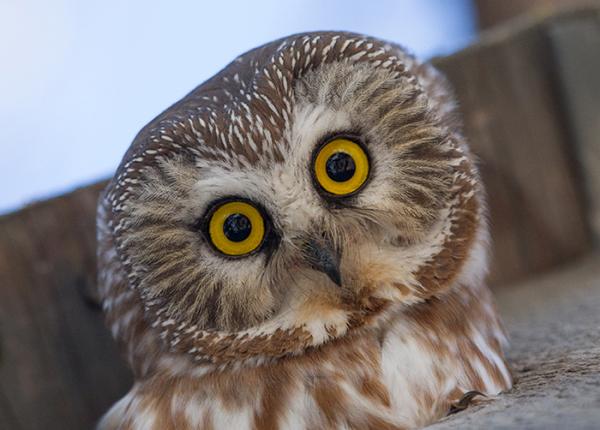Some could argue there isn’t much story here, but after going back and forth on sharing this, I thought it was interesting to look how laws work both in favor of the owls and against them, and the locals’ concern about them and desire to see them taken care of.
Let me know your thoughts! I’ll include some bonus pics in exchange for reading this.
From the Midland Reporter-Telegram
Residents concerned about fate of Texas burrowing owls amid new construction By Kessly Salinas
Texas burrowing owls have found a home in the burrows of a prairie dog town in an empty lot near Front Street and North Adams Street but will soon need to find a new one.
According to Donnabelle and Mike Hutt, there is about 8 to 10 burrowing owls that have made the abandoned prairie dog town their home.
After continuously seeing a food truck park in the same lot that the owls are living in, the couple worked to raise awareness about the birds, reaching out to officials to ensure the safety of the owls.
Now, the couple’s concern is reaching a new level. Construction for a new Dollar Tree will begin soon in the owls’ lot, and the duo is worried about the fate of these feathery neighbors.
Michael Nickell, museum scientist at the Sibley Nature Center, said that Texas burrowing owls are unique in that they reside underground. They might not always dig their own burrow, so they like to reside in abandoned prairie dog colonies.
Corrie Borgman, migratory bird biologist and nongame/landbird specialist at U.S. Fish and Wildlife Service said that because burrowing owls like living in abandoned quarters of prairie dog colonies, the two animals are often associated together.
Nickell added that the burrowing owl is a migratory bird, so they are considered a protected species under the Migratory Bird Treaty Act.
“A protected species doesn’t necessarily mean they’re endangered, threatened or vulnerable,” Nickell told the Reporter-Telegram. “But because the burrowing owl is a migratory species, it does fall under the protection of the Migratory Bird Treaty Act.”
The Migratory Bird Treaty Act of 1918 was established to ensure the sustainability of populations of all protected migratory bird species, according to U.S. Fish and Wildlife Service. The treaty protects over 1,000 species in North America.
“The MBTA protects birds themselves, as well as their eggs, their nests and any body parts such as feathers and things like that,” Borgman said. “It’s prohibited to kill a burrowing owl directly or remove it’s nest.”
If a burrowing owl built a nest and laid eggs in it, the nest would have to remain undisturbed until the birds have fledged.
Borgman said that although the Migratory Bird Treaty Act protects birds, eggs and their nests, it doesn’t protect habitats.
“If the food truck is parking directly on top of the burrow, it could be problematic,” Borgman said. “I think that it could easily be a conversation explaining to the owners that they don’t have to park directly on top because they are protected.”
She added that it’s a situation that could be resolved.
“Texas Parks and Wildlife has management guidelines that says to conduct activities at a minimum of 100 feet from the nesting sites,” Borgman said.
She said that although parking directly on top would lead to people disturbing the ground each time someone walks up to the food truck, if there was a minimum buffer between the truck and the nest, they could coexist in the same lot.
With a safe distance, the owls wouldn’t be hurt by the foot traffic that the food truck creates.
Game Warden Philip Bird added that a food truck creates very low disturbances to the burrowing owls.
The Migratory Bird Treaty Act doesn’t protect habitats, it only protects the birds, their nests and their eggs.
Donnabelle and Mike Hutt suspected that the owls were protecting a nest and newly lain eggs, but if there aren’t any eggs and nests right now, there isn’t much that can be done for the owls.
“It’s not nesting season for any bird in Texas at the moment,” Bird said. “Burrowing owls are federally protected, so there may be some type of permit that the construction company needs to get but that’s not something that the state regulates.”
Since it is not nesting season, the burrowing owls would just have to find a new habitat. Because natural habitat loss happens due to development, Texas Parks and Wildlife has constructed a guide about how to build artificial den sites in urban areas.
Bird said that burrowing owls’ nest anywhere that there’s prairie dog town and that there is plenty all over west Texas. The burrowing owls will be able to adapt and find a new home.
“I assume that when construction begins in earnest, the owls would fly off and find a better habitat for themselves,” Bird said. “It’s not nesting season, so there’s not really a state violation occurring.”


That looks like a pretty neat area. I’ve yet to be anywhere that looked like that, though we were talking about it as a potential trip for next year.
I’d love to see some burrow owls out in the wild!
That park and Palo duro always amaze me that I’m still in Texas. Recommended both highly.